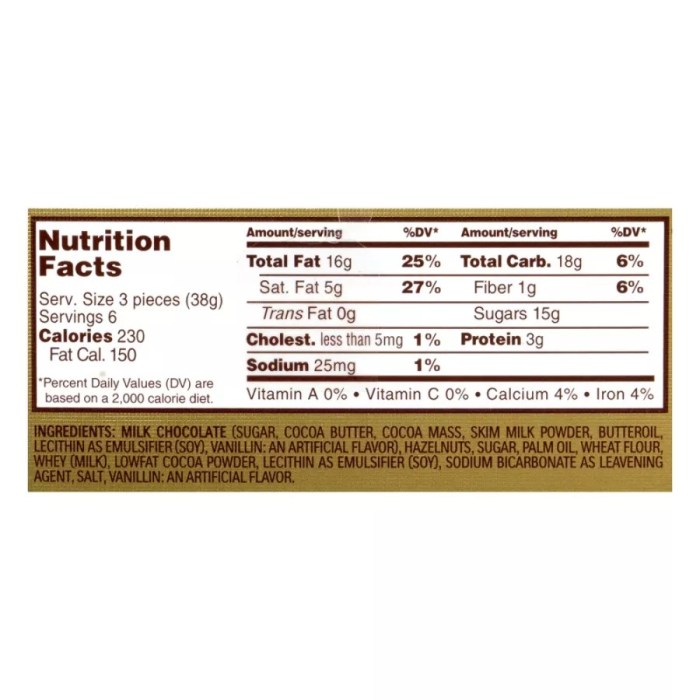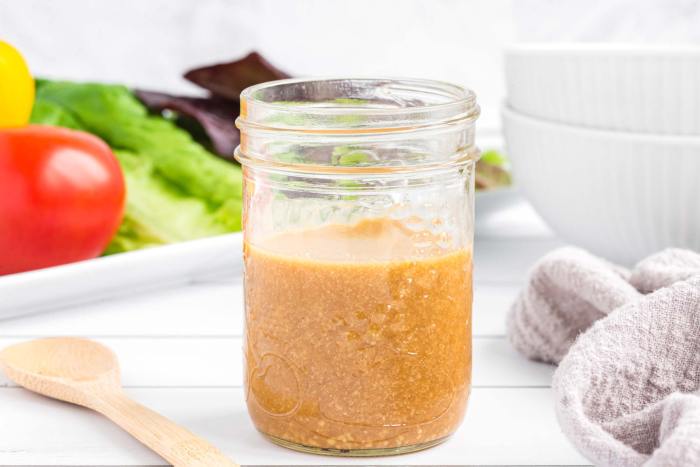Nutritional Composition of Rice Paper

Nutrition facts rice paper – Rice paper, a staple in many Asian cuisines, offers a versatile and relatively low-calorie wrapper for various dishes. Its nutritional profile, however, varies depending on the type of rice used in its production, primarily white rice or brown rice. Understanding this composition is crucial for making informed dietary choices.
Macronutrient Content of Rice Paper
The primary macronutrient in rice paper is carbohydrate, primarily in the form of starch. Protein content is relatively low, and fat content is minimal. White rice paper generally contains a higher percentage of carbohydrates compared to brown rice paper, which retains more fiber and some nutrients present in the bran layer removed during white rice processing. The exact macronutrient breakdown will fluctuate based on the brand and specific manufacturing process, but generally, white rice paper will have a higher glycemic index than brown rice paper due to the lower fiber content.
Micronutrient Content of Rice Paper
While not a significant source of micronutrients, rice paper does contain small amounts of vitamins and minerals. These include trace amounts of B vitamins (like thiamin and niacin), which are more abundant in brown rice paper than white rice paper due to the bran layer’s retention. Minerals such as iron and calcium may also be present, again in higher quantities in brown rice paper.
Rice paper’s nutritional profile is generally low in calories and fat, making it a popular choice for healthy eating. However, comparing it to other options like a turkey burger reveals interesting contrasts; you can check out detailed turkey burger nutrition facts for a comparison. Ultimately, the best choice depends on individual dietary needs, but understanding the nutritional content of both rice paper and other foods helps in making informed decisions.
However, it’s important to note that these quantities are typically low and should not be relied upon as a primary source of these nutrients in one’s diet.
Comparison with Other Wrappers
Compared to other common wrappers like tortillas and lettuce wraps, rice paper stands out due to its lower calorie and fat content. Tortillas, especially flour tortillas, are considerably higher in calories and fat. Lettuce wraps, on the other hand, offer a significantly lower calorie option but provide less in the way of carbohydrates. The choice of wrapper depends on individual dietary needs and preferences, balancing the desired macronutrient profile with other nutritional considerations.
Nutritional Information per Serving
| Rice Paper Type | Serving Size (grams) | Calories | Carbohydrates (grams) |
|---|---|---|---|
| White Rice Paper | 1 sheet (approx. 5g) | 15-20 | 3-4 |
| Brown Rice Paper | 1 sheet (approx. 5g) | 18-25 | 3-5 |
| Corn Tortilla (small) | 1 tortilla (approx. 30g) | 80-100 | 15-20 |
| Lettuce Wrap (large leaf) | 1 leaf (approx. 30g) | 10-15 | 2-3 |
Note
These values are approximate and can vary depending on the brand and specific product. Always refer to the nutritional information provided on the packaging for the most accurate data.
Culinary Applications and Recipes

Rice paper, with its delicate texture and neutral flavor, offers a remarkable canvas for both sweet and savory culinary creations. Its versatility allows for diverse applications across various cuisines, from fresh spring rolls to crispy fried snacks. The preparation methods are simple, allowing even novice cooks to explore its potential.
The inherent neutrality of rice paper makes it an ideal ingredient for showcasing vibrant flavors and textures of other components within a dish. Its ability to be softened with water or other liquids, or crisped through frying or baking, enhances its adaptability.
Rice Paper Preparation Techniques, Nutrition facts rice paper
Rice paper’s versatility stems largely from the ease with which it can be prepared. Different culinary applications demand different approaches.
Soaking is the most common method. Briefly dipping the paper in warm water until softened renders it pliable enough for wrapping. Steaming offers a gentler approach, preserving the paper’s delicate structure, particularly beneficial for delicate fillings. Frying, on the other hand, transforms the paper into a crispy shell, ideal for savory applications.
Savory Rice Paper Dishes
Savory applications highlight rice paper’s ability to complement a wide range of flavors and textures.
From Vietnamese fresh spring rolls (Gỏi cuốn) filled with vermicelli noodles, herbs, shrimp, and pork to Mexican-inspired rice paper tacos filled with seasoned ground beef, black beans, and salsa, the possibilities are endless. Even simple preparations like rice paper chips, seasoned and baked until crispy, offer a delicious and healthy snack alternative.
Sweet Rice Paper Dishes
The neutral taste of rice paper also lends itself beautifully to sweet applications.
Imagine delicate rice paper filled with fresh fruits, whipped cream, and a drizzle of honey, or crispy rice paper cups filled with a vibrant mango sorbet. These are just a few examples showcasing the delightful balance of textures and flavors achievable with rice paper.
Recipes: Vietnamese Fresh Spring Rolls (Gỏi cuốn)
This recipe showcases the classic application of rice paper in Vietnamese cuisine. The fresh, vibrant ingredients create a refreshing and flavorful experience.
Ingredients: Rice paper wrappers, vermicelli rice noodles (cooked), lettuce leaves, fresh mint leaves, fresh cilantro, cooked shrimp or pork, rice noodles, dipping sauce (fish sauce, lime juice, sugar, chili).
Instructions: Soak rice paper briefly in warm water until softened. Lay flat on a clean surface. Arrange noodles, lettuce, herbs, and protein in the center. Roll tightly, tucking in the sides as you go. Serve with dipping sauce.
Recipes: Crispy Rice Paper Chips
This recipe demonstrates how rice paper can be transformed into a satisfying and healthy snack.
Ingredients: Rice paper wrappers, cooking spray, your choice of seasonings (e.g., salt, pepper, garlic powder, paprika).
Instructions: Cut rice paper into desired shapes. Lightly spray with cooking spray and sprinkle with seasonings. Bake at 350°F (175°C) for 5-7 minutes, or until golden brown and crispy.
Visual Infographic Description
Imagine a visually appealing infographic. One section showcases a vibrant image of fresh spring rolls, with descriptive text highlighting the fresh ingredients and the rolling technique. Another section depicts crispy rice paper chips, arranged artfully, with text emphasizing their crunchy texture and versatility as a snack or appetizer. A third section could feature a dessert showcasing rice paper cups filled with a colorful fruit salad, highlighting the sweet applications of rice paper.
Each section uses bold, clear fonts and bright, appetizing colors to draw the viewer’s attention. The overall style is clean and modern, emphasizing the versatility and deliciousness of rice paper.
Health Implications and Considerations: Nutrition Facts Rice Paper
Rice paper, a staple in many Asian cuisines, offers a unique nutritional profile and presents both potential benefits and drawbacks for consumers. Understanding these aspects is crucial for making informed dietary choices. Regular consumption, as part of a balanced diet, can offer certain advantages, while excessive intake or individual sensitivities need careful consideration.
Potential Health Benefits of Rice Paper
Rice paper, being primarily composed of rice flour, provides a source of carbohydrates, offering energy for daily activities. However, it’s important to note that the type of carbohydrate and the overall nutritional context are key factors. Compared to refined white bread or pastries, rice paper’s carbohydrate profile is generally considered less impactful on blood sugar levels, making it a potentially suitable choice for individuals managing their blood glucose.
Additionally, rice paper is naturally gluten-free, making it a safe option for those with celiac disease or gluten intolerance. Its low fat and low-sodium content also contribute to its suitability within a heart-healthy diet.
Potential Drawbacks of Rice Paper Consumption
While generally considered a healthy food, excessive rice paper consumption can lead to an overreliance on carbohydrates, potentially contributing to weight gain if not balanced with other food groups. Furthermore, the nutritional value of rice paper is limited; it lacks significant amounts of protein, fiber, and essential vitamins and minerals. Relying on rice paper as a primary food source would therefore result in a nutritionally deficient diet.
The preparation method can also impact its nutritional profile; deep-frying, for instance, significantly increases its calorie and fat content.
Potential Allergens and Sensitivities
Rice paper, as the name suggests, is primarily made from rice. Therefore, individuals with rice allergies should avoid its consumption. While less common, some individuals may experience sensitivities to other ingredients that might be present in certain brands of rice paper, such as additives or preservatives. Always check the ingredient list to identify potential allergens and avoid products containing ingredients to which you are sensitive.
Cross-contamination during manufacturing can also be a concern; individuals with severe allergies should exercise caution.
Glycemic Index of Rice Paper Compared to Other Carbohydrate Sources
The glycemic index (GI) of rice paper varies depending on the type and processing method. Generally, it falls within the low to medium range, meaning it causes a slower and less dramatic rise in blood glucose levels compared to high-GI foods like white bread or sugary drinks. However, its GI is still higher than many low-GI options such as legumes or whole grains.
For example, white rice tends to have a higher GI than brown rice, influencing the GI of rice paper accordingly. Direct comparison requires specifying the exact type of rice paper and the method of preparation.
Summary of Potential Health Effects of Rice Paper Consumption
| Health Effect | Positive | Negative | Considerations |
|---|---|---|---|
| Carbohydrate Source | Provides energy; relatively low GI compared to some refined carbohydrates | Can contribute to weight gain if consumed excessively; limited nutritional value | Balance with other food groups; choose whole grain varieties when available. |
| Allergens | Naturally gluten-free | Potential for rice allergy or sensitivity to additives | Check ingredient lists carefully; be aware of cross-contamination possibilities. |
| Overall Health | Can be part of a balanced diet; low in fat and sodium | Lacks significant amounts of protein, fiber, and essential vitamins and minerals; preparation method impacts nutritional value | Incorporate into a varied diet rich in fruits, vegetables, and lean protein. |
Question Bank
Is rice paper gluten-free?
Yes, rice paper is naturally gluten-free, making it a suitable option for those with celiac disease or gluten sensitivity. However, always check the label for potential cross-contamination in commercially produced varieties.
Does rice paper contain a lot of calories?
The calorie content of rice paper varies depending on the type and size. Generally, it is relatively low in calories, making it a good option for weight management when incorporated into a balanced diet.
Can rice paper be stored for a long time?
Properly stored rice paper can last for several months. Keep it in an airtight container in a cool, dry place. Avoid exposure to moisture, which can make it brittle and difficult to work with.
What are some creative ways to use rice paper beyond spring rolls?
Rice paper can be used as a base for various dishes, such as savory wraps, dessert wrappers, or even as a crispy element in stir-fries. Experiment with different fillings and cooking methods to unlock its culinary versatility.



